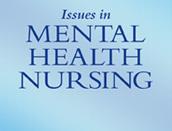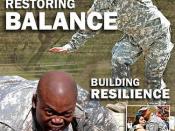Mental Health does not make striking dinner conversation. Especially if you are about eat a delicious Ethiopian Doro Wat (spicy Ethiopian chicken dish) or an Afghan Rice Pilaf. It is also not something you chat about at the grocery shop with a friend, nor is it something you talk about to a qualified Mental Health Professional on the phone or at a face to face interview with the aid of an interpreter from the same cultural background. That is if the person knows what Western Mental Health actually means. For many CALD families Mental Health is a concept that is just crazy! It is something that can only lead to bringing shame to the family and community.
It is well documented that migrant populations that have experienced social displacement, trauma and torture, and separation will enter a country with a number of physical, emotional and psychological disturbances. It is also well known that that these groups are entering the country with a label, and assuming the identity of a newly arrived migrant/refugee with a low socioeconomic standing, in other words walking into social trouble.
The higher prevalence of mental health problems in lower socioeconomic populations is also well documented. Therefore, it can be said that any migrant entering Australia that fits this description will be faced with many social problems and in turn is more susceptible to developing a mental health problem at some stage of the settlement. So where does this leave the children and adolescents?In terms of service provision there seems to be a lack of resources and professional knowledge in the area of CALD child and adolescent mental health. Research in this area is also very scarce and culturally appropriate tools to assess a childÃÂs well being do not yield high reliability or validity when working with CALD specific children. Providing a service from specialist child and mental health service for children that are experiencing prolonged emotional dysregulation becomes a difficult task for a number of reasons. Some of these are as follows, there exists a gap in the mental health services for CALD children (0-18 years) in relation to the psychological problems that they may be experiencing. There is also the belief that no one speaks of mental health problems in a CALD family due to negative perceptions from surrounding community members. Another issue is the lack of community awareness for CALD families in relation to mental health in Western Societies. Information about services are provided in the various Migrant Resource Centres, however servicing migrants with migrants can in some instances be a double edged sword in regards to mental health. I understand the advantages that come with this such as forming trust, rapport, overcoming language barriers, normalising relevant settlement stressors and so forth. However, when dealing with such a sensitive topic a worker with no mental health experience will in fact give advice according to their own values and beliefs with no negative intentions for the client but purely because they themselves do not know how to deal with these issues. So the point I am trying to make is that when it comes to mental health we are tackling something that is taboo for all types of communities but this is much stronger in non-western societies. In identifying this many families keep this a secret when confronted with the problem due to the fear of bringing shame to their family.
When addressing cultural issues it is important to note that we are talking about BELIEFS, in this case BELIEFS about MENTAL HEALTH. All populations have their own way of dealing with mental health problems that have positive outcomes. For example, according to West-African wisdom teachings, it is noted that emotional disturbance manifests as an irregular rhythm that blocks the vital physical energy flow. A tribe in Kenya believes that a bad spirit is responsible for things such as famine. One such famine is nyawawa, which emerges as a wind and sweeps across the Luo country. This wind is a spirit and may cause death and destruction including bringing famine but also an explanation to various emotional disturbances in people. The use of various rituals, dances, and drumming assists in the removal of the bad spirit from the person. I guess the point I am making is that, it is the belief around the origination of symptoms that drives treatment. A religious person may believe that their sadness is from the loss of a loved one that person may then pray and receive their own treatment and feel better. A western family may believe that the displaying of sadness from their child is from their dysfunctional relationship and seek family counselling and feel better. And finally a Sudanese family living in Australia may believe that their child is having severe anger outbursts because of a bad spirit and seek _______? They donÃÂt know where to go. How do they tell someone about the spirit and whom do they tell?I mentioned previously that there is a gap. This is the gap in service delivery, the lack of cultural mental health professionals servicing CALD children and adolescents. Please note that I am not in an instance suggesting that we place mental health workers that are from cultural backgrounds to fill these roles or mental health workers that are simply interested in working with CALD populations. I am suggesting that we seek people with sound mental health knowledge, skills, and embrace cross-cultural psychological interventions when working with these families.
Disorders in Children and Adolescents: Research,Assessment and Intervention. Wendy Silverman & PhilipTreffers (Cambridge, 2000)Anxiety Disorders in Children and Adolescents [ClinicalPractice, No. 22]. Syed Arshad Husain & Javad Kashani(American Psychiatric Press, 1992)Anxiety Disorders in Children





